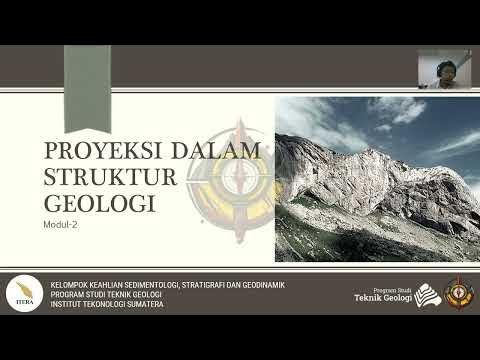Solid Geometry Grade 11
Summary
TLDRThis instructional video script guides Grade 11 students through solid geometry exercises, focusing on orthographic projection to draw the front, top, and right views of a pyramid. The instructor emphasizes the importance of accurate measurements, using a compass, and understanding hidden details. They demonstrate the process step-by-step, including how to handle auxiliary views and cuts, and encourage students to practice for exams, noting the availability of matric past papers for additional practice.
Takeaways
- 📐 The lesson is focused on solid geometry, specifically drawing orthographic projections of a pyramid with a 60° angle.
- 📏 The pyramid has a base length of 75 units and side lengths of 30 units, with an auxiliary view provided for additional measurements.
- 🔍 The instructor emphasizes the importance of accurate measurements and the use of a compass for consistency.
- 📝 The drawing process involves labeling the auxiliary view and using it to help visualize the shape for the top view.
- 👁️ The 'little man' perspective is used to determine which parts of the pyramid will be visible from the top view, including the use of dashed lines for hidden details.
- 📉 The instructor explains the concept of 'cutting' the pyramid and how to represent this in the top view with solid lines and hatching.
- 📏 The right view drawing process is similar, using the 45° line to transfer points from the front view to the side view.
- 🔄 The instructor advises on the importance of keeping rulers clean to avoid smudging and ensure neat work, especially during exams.
- 📈 The right view includes identifying visible and hidden details, with the base of the pyramid partially visible and the top cut off.
- 🎨 The instructor uses a highlighter to emphasize the cut lines and distinguish between solid and hatched areas in the drawing.
- 📚 The script mentions that grade 11 students should use matric (final year) past papers for practice if grade-specific papers are unavailable.
Q & A
What is the main topic of the video script?
-The main topic of the video script is solid geometry, specifically drawing the front view, top view, and right view of a geometric shape in orthographic projection.
What is the angle of the pyramid mentioned in the script?
-The pyramid mentioned in the script is at an angle of 60°.
What are the measurements given for the prism in the script?
-The prism has a length of 75 and a side length of 30.
What is the purpose of the auxiliary view in the script?
-The auxiliary view is used to help in drawing the top and right views of the geometric shape by providing additional lines and points for reference.
What does the script suggest about the importance of keeping rulers clean?
-The script suggests that keeping rulers clean is important to ensure that the work looks neater, especially during exam or test season.
How does the script describe the process of drawing the top view?
-The script describes the process of drawing the top view by starting with the bottom line, measuring and transferring points from the front view to the top view, and using the auxiliary view for reference.
What is the significance of the 45° line in the script?
-The 45° line is significant in the script as it is used to transfer points from the front view to the top and right views, ensuring the correct angles for the geometric shape.
What does the script imply about the visibility of certain parts of the pyramid in the top view?
-The script implies that in the top view, the bottom of the pyramid is not visible, and parts of the pyramid at the back are represented by dashed lines, indicating hidden detail.
How should the hatching in the top view be done according to the script?
-The hatching in the top view should be done at 45° using a ruler and at equal intervals, with the hatching being lighter than the solid drawing.
What is the orientation of the 'little man' in the script when drawing the right view?
-The 'little man' in the script is standing to the side of the geometric shape, looking at it from the side, which influences what parts of the shape are visible in the right view.
What does the script suggest about the importance of the auxiliary view during exams?
-The script suggests that the auxiliary view is important during exams because marks can be deducted if it is not properly drawn or if it obstructs the visibility of the main views.
Outlines

Cette section est réservée aux utilisateurs payants. Améliorez votre compte pour accéder à cette section.
Améliorer maintenantMindmap

Cette section est réservée aux utilisateurs payants. Améliorez votre compte pour accéder à cette section.
Améliorer maintenantKeywords

Cette section est réservée aux utilisateurs payants. Améliorez votre compte pour accéder à cette section.
Améliorer maintenantHighlights

Cette section est réservée aux utilisateurs payants. Améliorez votre compte pour accéder à cette section.
Améliorer maintenantTranscripts

Cette section est réservée aux utilisateurs payants. Améliorez votre compte pour accéder à cette section.
Améliorer maintenantVoir Plus de Vidéos Connexes

Orthographic Projection from isometric view in Engineering drawing

Exercise 1.1 Orthographic Drawing

Orthographic Projection Explained

ORTHOGRAPHIC DRAWING EXAMPLE

Isometric View | How to Construct an Isometric View of an Object

Praktikum Geologi Struktur 2024 - Modul 2. Proyeksi dalam Struktur Geologi - 1. Sistem Proyeksi
5.0 / 5 (0 votes)
